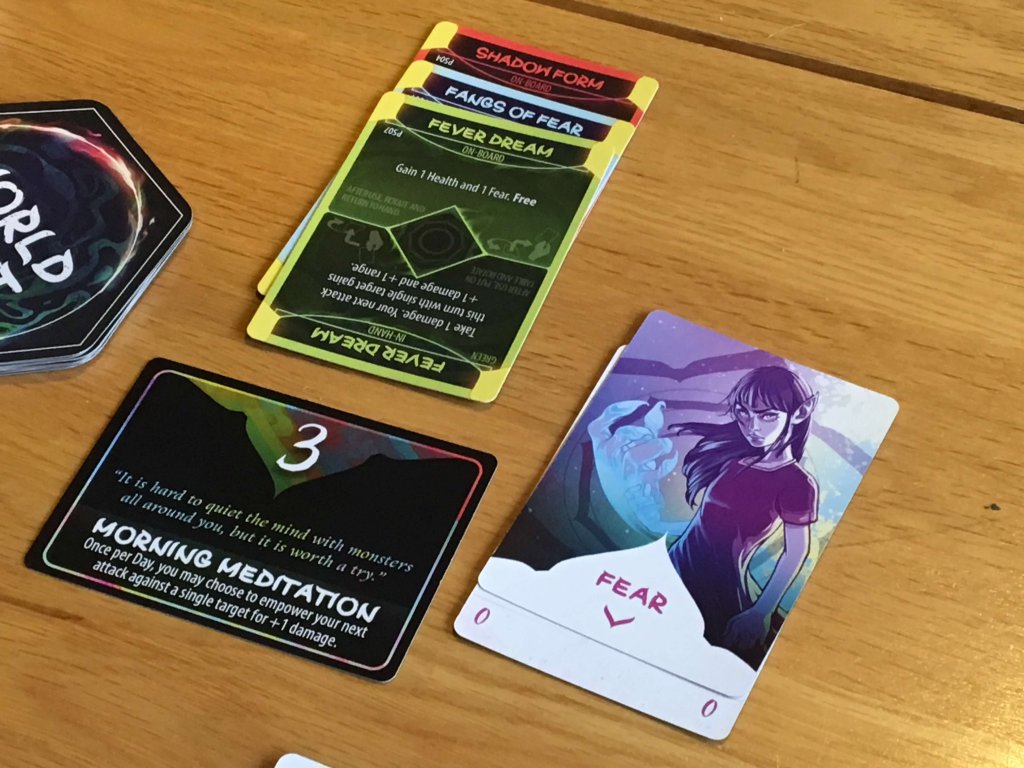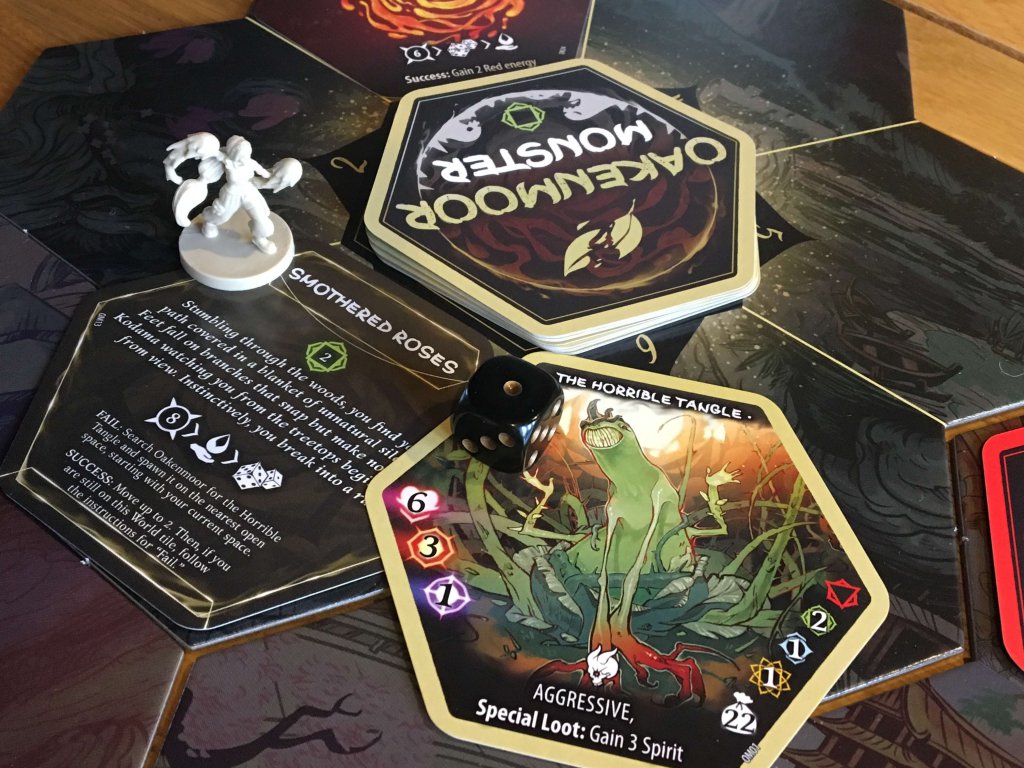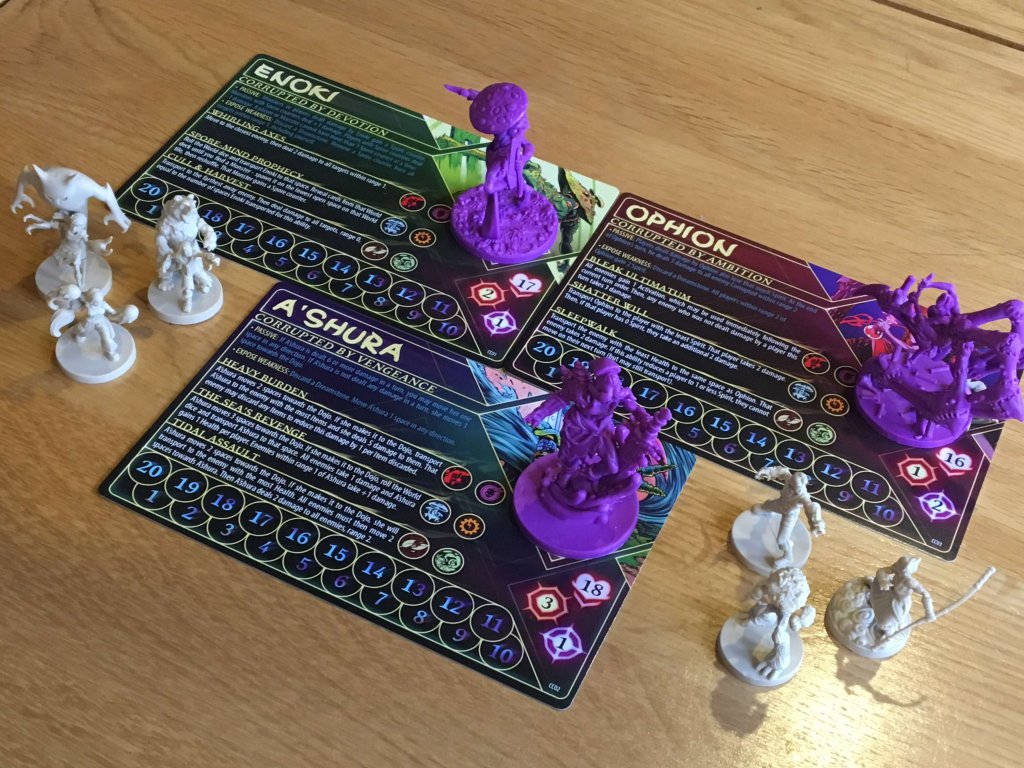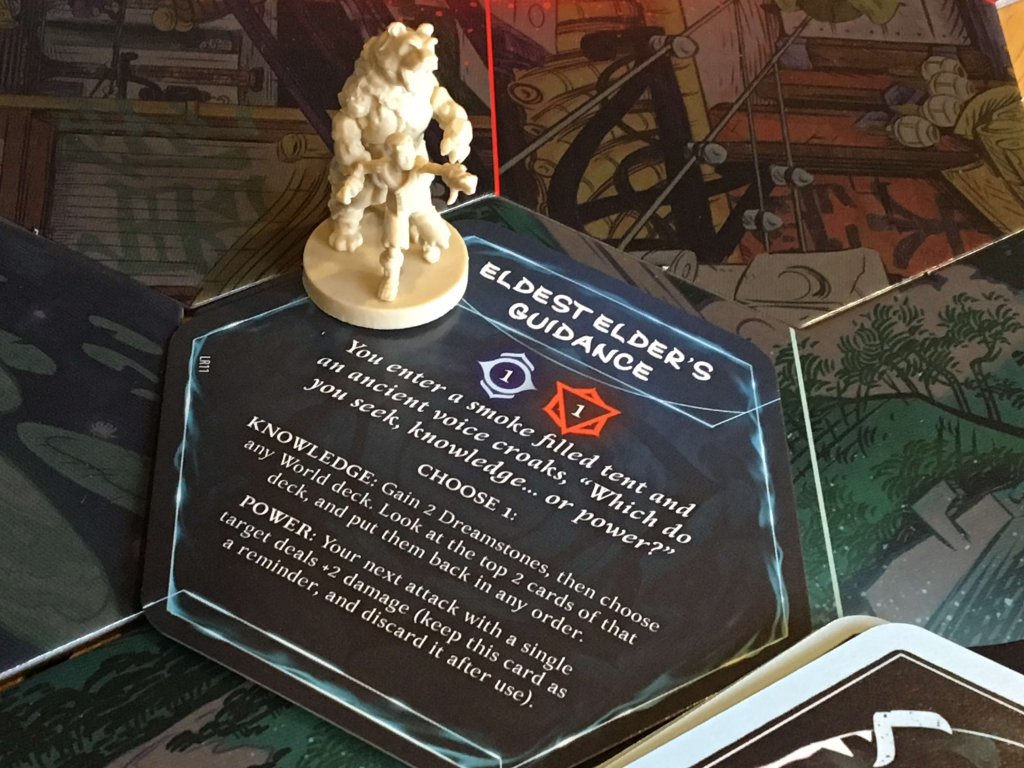Champions of Hara — Cartoon clash
Do you have an unquenchable thirst for adventure? Do you enjoy questing through the anime worlds inspired by Bakugan and Dragonball Z? Are you looking for a game that offers a wide variety of ways to play, with support for solo, co-operative and competitive play? If the answer to these questions is yes, then Champions of Hara might be for you.
Champions of Hara is the latest game from Walter Barber, Ian VanNest and Andrew Zimmerman — published by Greenbrier Games, who previously brought us BarBEARians Battlegrounds, which we particularly enjoyed in our recent review. Where BarBEARians is a relatively light, almost party weight game that uses dice rolling and hidden action selection to create a mobile game style feel, Champions of Hara is a big, heavy adventure game aimed at a very different audience.
The first thing that you’ll likely notice about it is the huge, involving manual is that it features painstaking detail about each aspect of the game and the different ways that it can be played. There are several basic modes of play including solo, cooperative and competitive, each of which includes its own rules and setup instructions. The various characters in the game (of which there are six) also has their own individual story, which again come with some specific variations and text.
Once a way to play and a scenario (if any) have been chosen, the setup begins. For a big game, credit must be given to the design team for ensuring that complexity is kept to a minimum in this department. The board is modular and each of the tiles relates to a region within Hara, as well as a central tile called The Dojo. On top of these, a deck of cards will be placed, which will be seeded according to the scenario and number of players.
I mentioned earlier that there are several characters in Champions of Hara — six in fact — and each player will choose one. The characters all have access to common player boards that track their health, spirit and then experience (or energy) in three different colours. What makes each character unique, however, is the miniature that represents them, a personal deck of cards and an extra resource which is specific to them.
The character specific resource is linked to the characters personal deck of cards in such a way that by generating that resource (for example fear or fury) and unleashing it, powerful benefits can be gained. These resources are used to great effect to ensure that each character feels different to play with. Gathering a certain number of resources is always good, but too much of a good thing can make some of the characters unpredictable or volatile.
The unique character decks drive most of the action in Champions of Hara and the system used is pretty unique. Each deck is made up of eight cards which is split into two halves. The top half describes an effect that happens when the card is played from the players hand, whilst the bottom half describes what happens when the card is played from the table, having previously been played from the hand. Players can take three actions this way each turn, but playing a card from hand and then from the table in the same turn is not allowed.
These turns, such as they are, will be taken during a day phase that makes up the majority of the game. During the day, players will battle monster tiles that are played onto each region board and flip events, which can then be resolved by passing tests (based on a classic pass/fail criteria.) Defeating enemies and participating in events grants the players experience and items, all of which helps the characters grow stronger.
When the day phase is finished, the players will perform the dusk phase, which (as far as cleanup phases go) is fairly interesting. In addition to a few normal and predictable events involving drawing new monster and event tiles into the game world (always placed in the lowest numbered space) the voidshift will be performed. When this happens, at least two of the region tiles will be swapped around, completely changing the layout of the board. This is a cool feature, but I must admit that it’s quite cumbersome to actually make the swap… Especially if you’re as clumsy as I am!
The basic flow of Champions of Hara (in all modes really) is that the players move around the board, testing themselves in events, fighting monsters (and hopefully defeating them) and gaining experience/energy to make themselves more powerful. They then work either together or against each other to advance whatever objective the current game requires — this might be to defeat a big boss enemy, achieve something within a certain region, or max out their experience/energy bars.
Moist of the gameplay is simple, as soon as the card system is understood. Combat, for example, is merely a matter of comparing the strength of the attack card being used with the strength of the enemy. Some enemies have abilities that allow them to attack first or retaliate, whilst in general, enemies will simply attack players within their range after the player turns. Events are similar — some are a simple case of meeting a criteria to pass or fail, whilst others have degrees of success and failure.
When played solo, Champions of Hara presents the player with a scenario for each of the characters explaining aspects of their backstory. As with all the scenarios in Champions of Hara, the scenario book explains the lore based on various milestones and achievements, as well as through the cards in each region. The overall effect is good and it certainly made me feel that the solo mode was more than just a mere sideshow.
With components as good as those used in Champions of Hara, the world and characters in it (from the miniatures representing the players and the three boss enemies to the beautifully drawn figures on the cards) is exceptionally well realised. This visual appeal is further enhanced by the written material that comes across on both the cards and via the scenarios.
If you combine these factors with the interesting way in which characters develop over the course of the game, and their uniqueness thanks to those decks, there are some interesting mechanics and features to explore in the gameplay. These positives are enhanced by the various modes of play and the range of player counts as well as play preferences that the game supports.
Slight downsides come from the fact that even though most scenarios are fairly simple to set up, there is always an investment of time needed to play a game of Champions of Hara. There’s no quick play mode as such, so it’s not a game that can easily be played on a one off basis — it certainly works best when played by the same people over a series of games. That said, I found this investment worthwhile on every occasion that I made it.
Champions of Hara is a fun, thematic game that has two or three smart, unique and interesting mechanics that elevate it above the average adventuring game. It uses tiles to build out a world with a decent level of theme, then layers in some complex scenarios and modes of play that increase the complexity and, for more people, intensify the level of immersion. Whilst Champions of Hara won’t appeal to everyone, it is enjoyable and different enough that it deserves at least a second glance.
Champions of Hara is available for purchase right now. You can find out more about it on the website of publisher Greenbrier Games.
Love board games? Check out our list of the top board games we’ve reviewed.





Comments are closed.